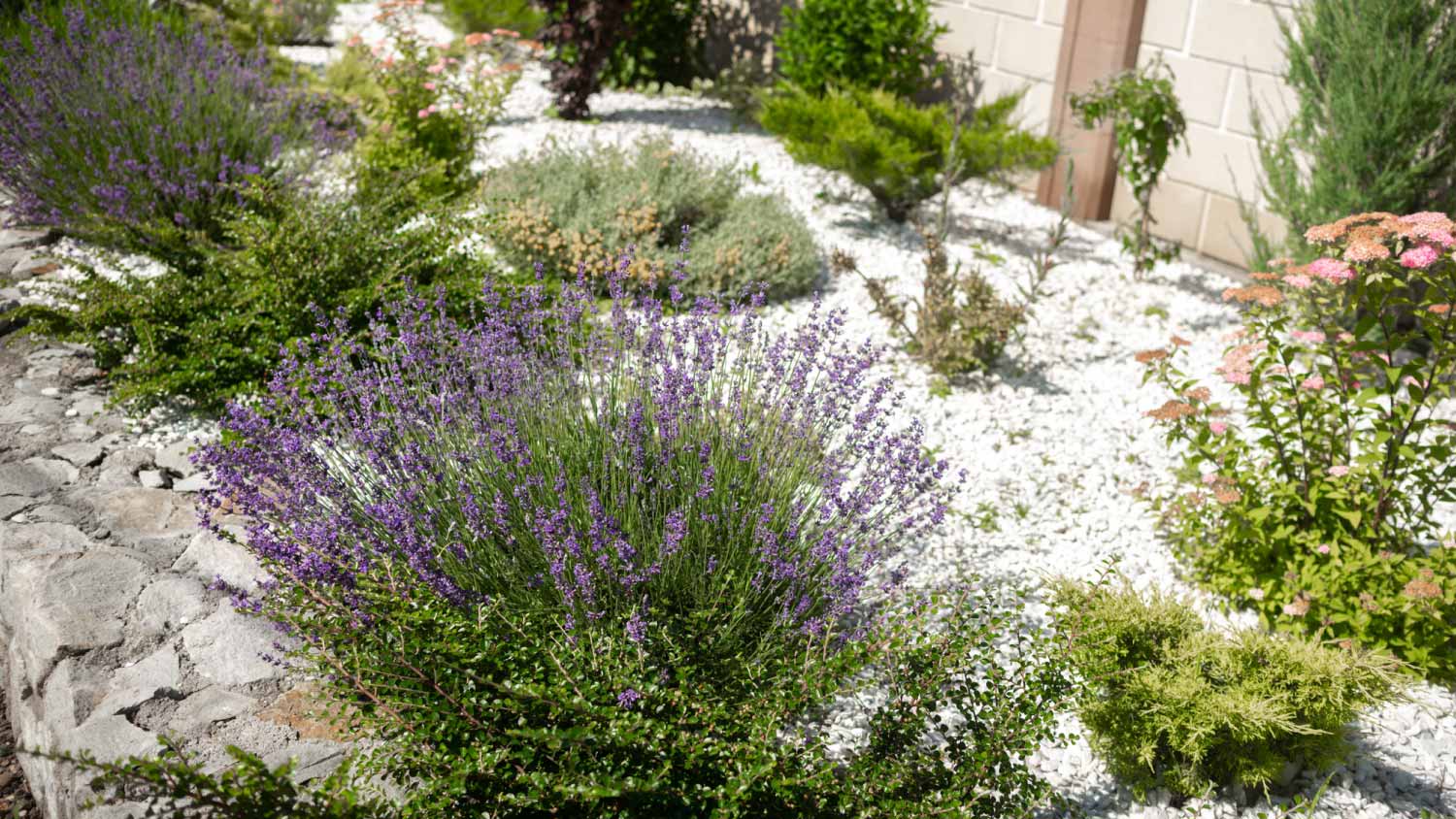
A deck skirt can improve the form and function of a deck. Find out what it could cost to install deck skirting in your backyard with this guide.


Limestone is a landscaping material that comes as crushed stone, pavers, and bricks.
How much limestone you need depends on the area and the stone's density.
Limestone costs an average of $25 to $50 per linear foot.
Limestone is a star in the world of landscaping, thanks to its sturdiness and attractiveness. It’s often used in landscaping for paths, patios, retaining walls, edging, and decorative rock due to its durability and natural look. If you're wondering, “How much limestone do I need for a landscaping project?” this handy limestone calculator will help you figure out the correct amount to use.
Whether you're creating a walkway or using limestone as a decorative feature in a garden area, use the table below to get an idea of how much you'll need based on your project's size
| Limestone Density | Area (Square Feet) | Depth (Feet) | Limestone Needed (US Tons) |
|---|---|---|---|
| Low | 30 | 0.5 | 1 |
| Medium | 30 | 0.5 | 1.2 |
| High | 30 | 0.5 | 1.3 |
| Crushed | 30 | 0.5 | 1.1 |
| Solid | 30 | 0.5 | 1.3 |

To find out how much limestone you'll need, you first need to find the volume of your project, which is the depth multiplied by the area. Then you'll multiply the volume by the limestone's density:
Limestone Needed = Volume x Density
Measuring for a limestone walkway or other landscaping feature area is relatively simple. If the walkway is a rectangle, you'll need to measure the total width and the length. You'll also need to measure the depth of the walkway.
If your walkway is curvy or has bends, divide it into sections, measuring the length and width of each one. Multiply the length by the width of each section, then add them together to get the total area.
To measure a circular area for limestone, such as around the base of a tree or for a circle-shaped garden, calculate the area of the circle.
First, measure the diameter of the circle. Then, divide that by two to get the radius. To find the area, square the radius by multiplying it by itself and multiplying that by π, or 3.14.
For example, a 10-foot diameter circle has a radius of 5. The area of the circle is 3.14 x 5 x 5, or 78.5 feet.
If you're hoping to use limestone to enhance the landscaping around your home or to install a walkway, a professional hardscaper is the best person to hire. Specifically, a hardscaper specializes in outdoor features, such as patios and walkways. They'll be able to help you choose the best limestone materials for your project and the appropriate amount.
From average costs to expert advice, get all the answers you need to get your job done.

A deck skirt can improve the form and function of a deck. Find out what it could cost to install deck skirting in your backyard with this guide.

The average gazebo installation cost depends on the size and material. Keep reading to discover how much your gazebo may cost.

Learn the cost of a metal awning for your home. Discover the essentials of installation, materials, and labor, and explore ways to save on your project.

Poor fitting, age, and damage can make your deck lopsided. Learn what causes unwanted unevenness and how to level a deck with these steps.

Using brick or concrete patio pavers can transform your backyard into your own luxury getaway. Browse our paver patio ideas to get your creative juices flowing.

Dreaming of a new outdoor entertaining space? Learn how a concrete patio can increase home value and pay for itself if you’re thinking of selling soon.